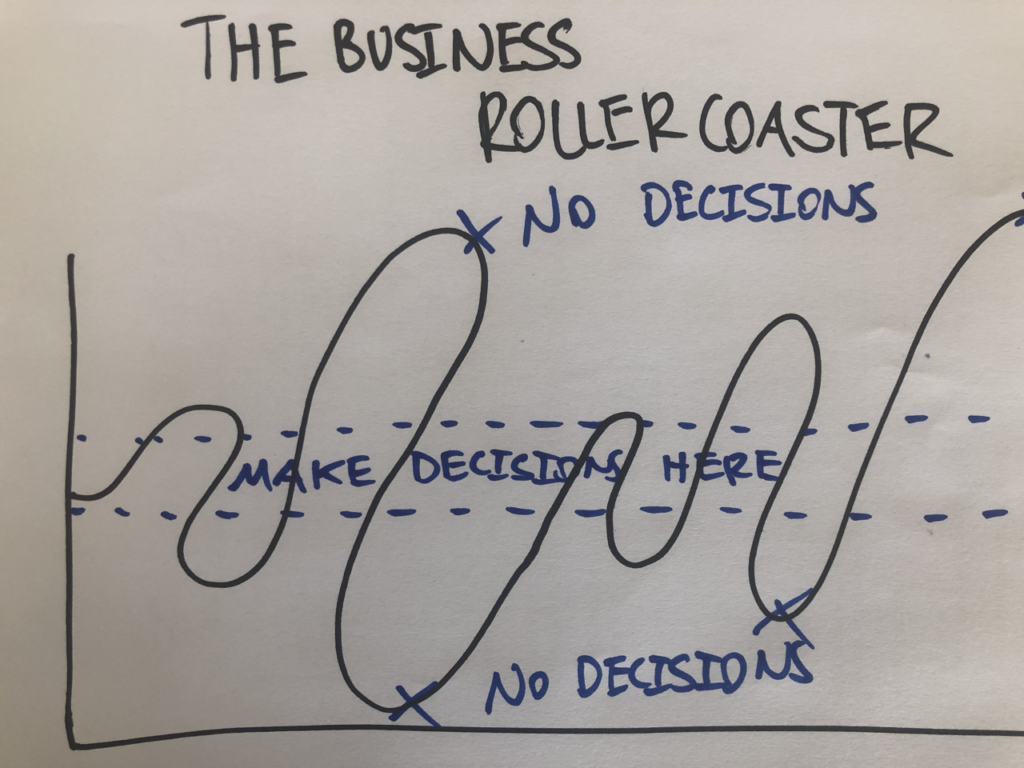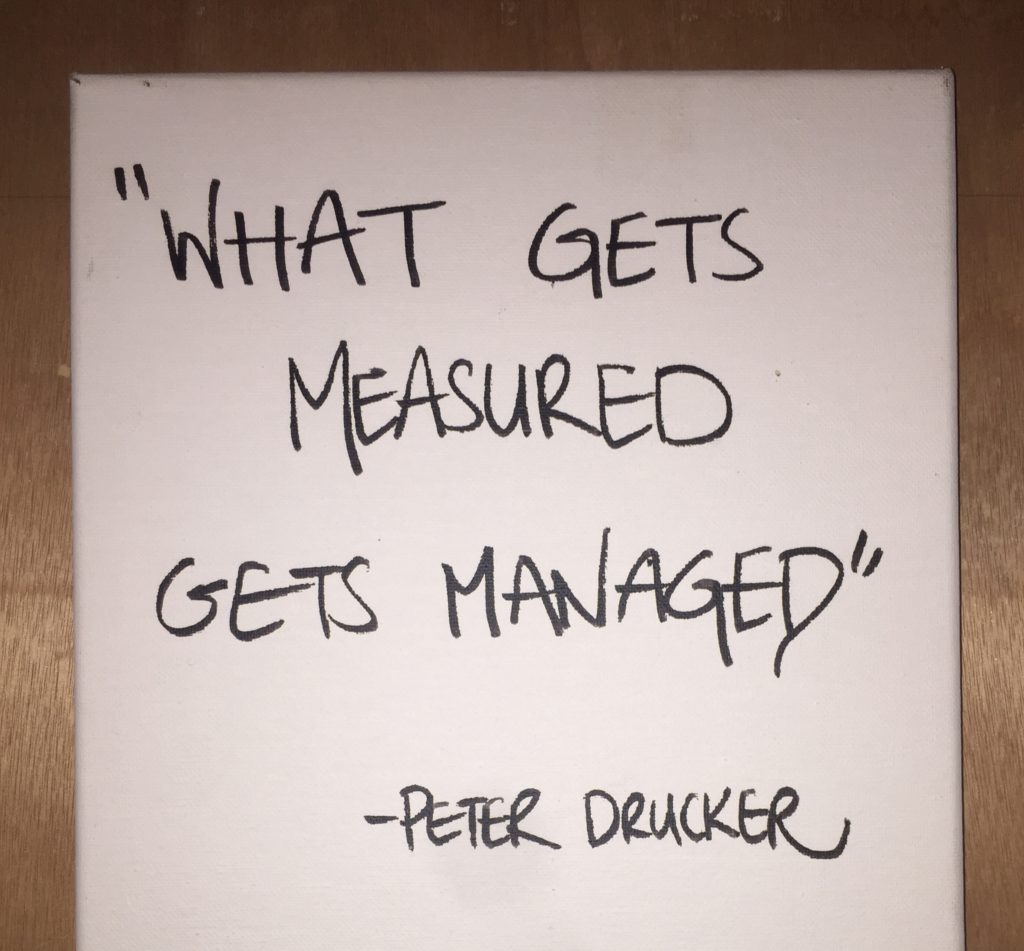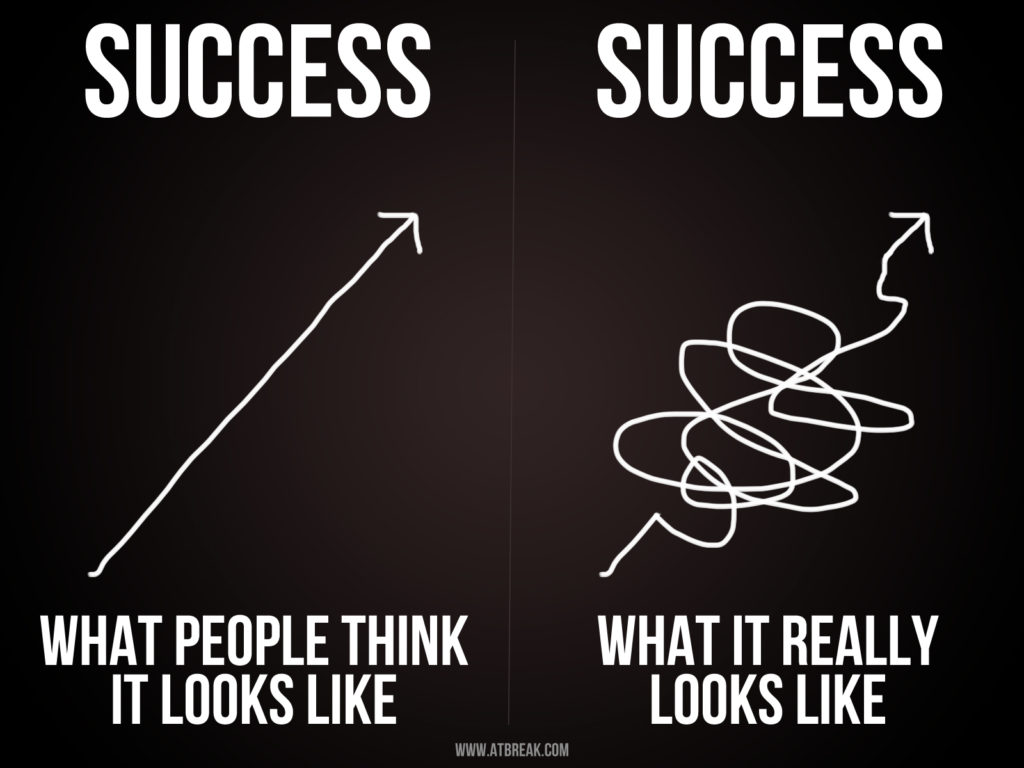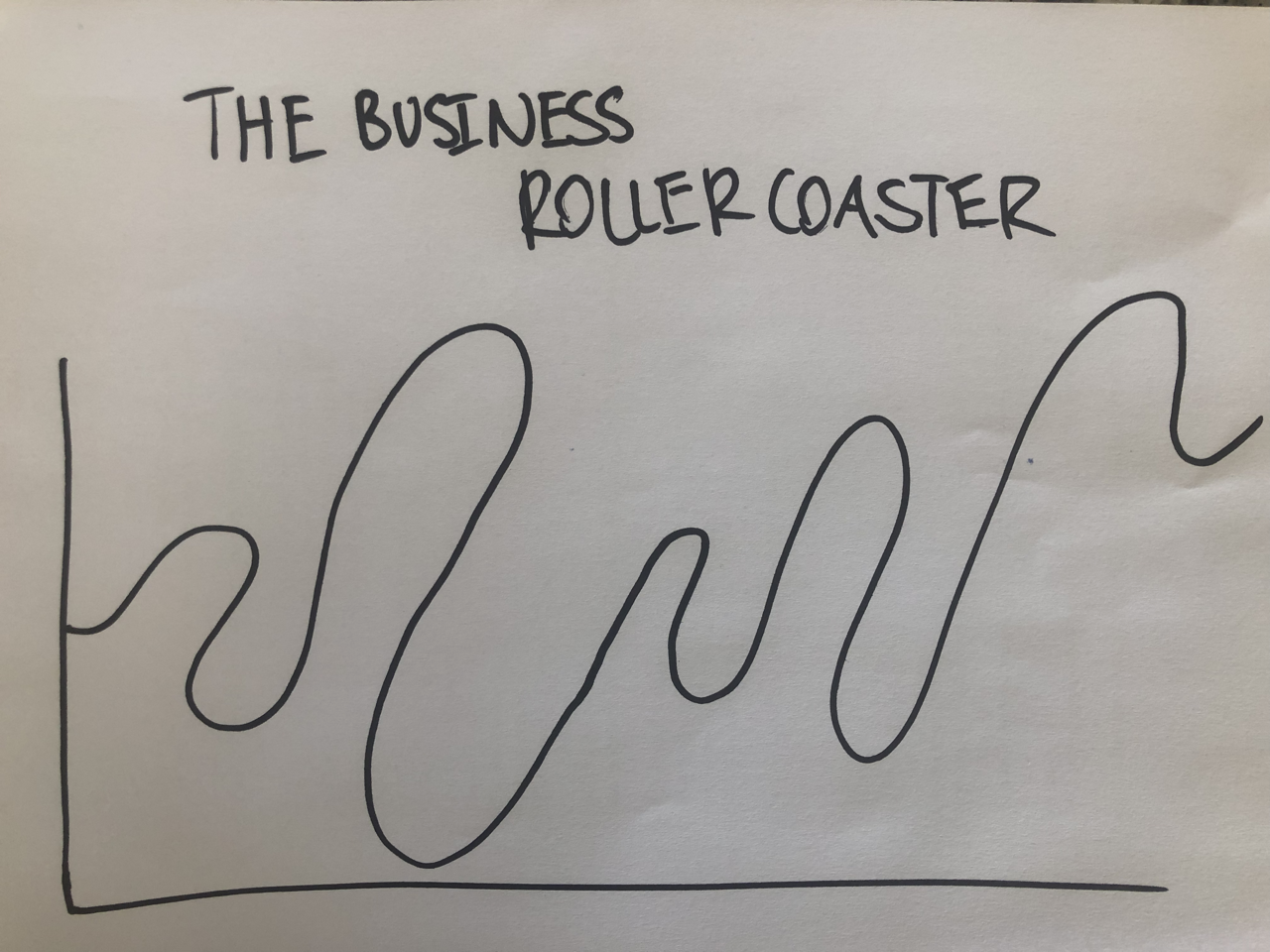Sales, aka revenue, turnover, or cashflow has come up in discussion with several of my friends (who own businesses) recently. Each one has been at a different stage of their sales cycles and it’s been interesting to observe their thoughts, mood and feelings towards the business.
It reminded about how much of an impact the ups and downs the Silverspoon had on me in the early days.
An article that helped me immensely was “Harnessing Entrepreneurial Manic-Depression: Making the Rollercoaster Work for You by Tim Ferriss”.
Today I will unpack this article and how I learnt to ride the ups and downs of the business rollercoaster when I owned the restaurant.
1 Separate Your Self Worth
You and the business are separate things, physically, emotionally and mentality.
On the surface this makes sense, and you might think you act like this is true. But let me ask you this. Are your emotions, feelings, and outlook swayed by the ups and downs of the business?
If you derive some or all of your sense of self-worth from a business indicator such as cashflow you will be taken for a ride. It took me a couple of years to learn to detach my emotional wellbeing from the financial wellbeing of the business. It sounds simple but often you are more intertwined with the business than you realise.
Let me give you a simple example. Think about something physical you own like your phone. Now imagine that you drop the phone and break the screen. Sure you made a mistake by dropping it and you might be annoyed at yourself.
But it’s the phone that’s broken not you.
So you set about getting the phone fix. It’s a logical and practical problem to solve. This is easy to see with a phone. But when it’s a responsibility you’re directly in charge of (like
The first thing to realise is if your
2 Don’t Make Critical Decisions When You Are at the Extremes of the Rollercoaster
There is a quote I heard along the lines of “you only get hurt on a rollercoaster if you hope off while it’s moving”. It was in reference to the share market, but running a business will have the same huge highs and lows, if not more. You can go from having the biggest days sales with lots of money in the bank to bills coming out your ears and feeling like your drowning very quickly.
Avoid making critical decision in the two extremes (high and low) points of your journey.
Find a way to shelve it or come back to it. Write it down, make a note of it, pause and then come back to it when you are in a more stable part of the journey. Often you will find things weren’t as bad as you initially thought and putting the following steps into action has helped me move forward.

3 Focus on the Things You Can Control
It’s hard when there are tonnes of things happening in the market that you cannot control, such as competitors opening (or closing) and new trends coming and going.
It’s easy to think that sales
Sales is a process just as much as it is an art form. Sure you need to have more personality than a dead fish, but some of the best salespeople are the ones that develop and follow a checklist (aka a process).
Control the things you can control by focusing on your sales process delivering a high standard of service.
Review your sales process start to finish
- Write a list of all the interactions you have with your clients in a typical transaction (things you can control)
- pick one element or task – fix it, improve it, tweak it
- keep going until you cross off the list.
- Start again (see below about cycles)
- Engage your staff, have regular conversations about your overall sales targets and pick one small thing they can do this month to work towards it.
- Talk about sales over and over (what gets measured gets managed)
Whilst you can’t control you market place you can understand it
- step outside your shop and visit others in the immediate
area on a single piece of paper list all your immediate competitors- use the Stats website to benchmark your business against the market
Remember it’s not just instore visits where the customer interacts with you either.
When you combine website, email, phone calls, facebook, driving or walking past you have 100’s of interactions a day. What are some small tweaks you can do to make these interactions leave people feeling more positive about your business?

4 Don’t Discount the Small Things That Make a Big Difference
Often when we are analysing our business and things like overall sales, we conjure up amazing plans in our head and get excited about how amazing it will be when we pull it all off.
Then we go to work, get distracted with a phone call, sorting out a problem, replacing a sick shift and before you know it we have no time or energy left to put this big plan in place.
I know I was a shocker for this! That’s why in Take Another Small Step I talk about how
“Our journey at the Silverspoon wasn’t 4 big leaps, but 4000 little steps”
Rather than trying to give your business an extreme makeover every month think about introducing one small thing at a time. (here is a good podcast about reducing it down to the easiest
10 small things can have the same, if not more, impact as one big thing. Y

5 Fish Where the Fish Are Biting
A philosophy that served me well when I was running the restaurant
When I first took over the Silverspoon I tried all these crazy ideas to get more sales in the quiet times. It was an uphill battle and I never really got any results. Then I decided to start focusin on making the busy times even busier.
For example, Mothers Day was our busiest day of the year. Each year we set a target to make it slightly bigger than the previous year. In the weeks leading
Review and understanding where your sales are coming from, what are youryou big days, hours, or times.
In “2012: The Year We Had a Baby and Started Living the “4-Hour Work Week” I talk about
The Bloated Menu
The very first thing I did was write a list of all the menu items on a giant piece of A1 paper. I wanted to understand how 20/80 applied to our menu. What items were bringing in the majority of the income, and what wasn’t.
6 Understand Your Business Cycles
Lastly what I have found with 15 odd years of business experience is that some things just happen over and over. Running a service-based business is not a linear line with a start, a finish
It’s more like a clock that keeps going round and coming back to the same point again. Groundhog Day – it sounds depressing right.
What I mean by cycles is just like other areas of the business like controlling labour costs, sales is not a ‘do it once and never come back to it again’ type role. I started to realise I will have the same conversations over and over and that’s ok.
Being a natural problem solver I tended to get frustrated when the same problems continued to pop up. It made me feel like something was wrong and so I start digging deeper and making mountains out of molehills.
I learnt that I will come back to the same problems over and over. But that’s a good thing because once you have solved a problem once, it’s now a solution in your toolbox that you can implement over and over.
Also, I started to see weekly, monthly and yearly patterns. By tracking sales I could look at the past cycles which would give me peace of mind when it seemed like I was in the midst of turmoil.
A Quote to Finish


